 Home
Gallery
Contact
Events & Projects
Projects: 2019 On
Film & TV
Archive & Links
Home
Gallery
Contact
Events & Projects
Projects: 2019 On
Film & TV
Archive & Links
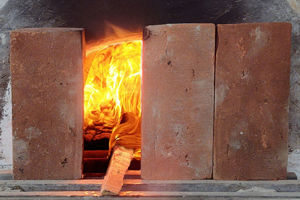
 Home
Gallery
Contact
Events & Projects
Projects: 2019 On
Film & TV
Archive & Links
Home
Gallery
Contact
Events & Projects
Projects: 2019 On
Film & TV
Archive & Links
|

|
2022 Furnace ('Phoenix') and Lehr at Quarley - 'Phoenix' Firing Four - Non-blown Window Panes
Projects: 2019 Onwards
Wood Gathering and Processing
Phoenix Firing Three
Repairs after Firing Three
Phoenix Firing Four
Phoenix Firing Five
The New Shelter Floor
The Electric Kiln
Rebuilding the Lehr
Etna Build and Firings
General Photos
Vesuvius Firepit Build
Vesuvius Superstructure Build
Vesuvius Firings
Repairs after Firing Five
Phoenix Firing Six
------------------------------------------------
Furnace Performance and Lehr Non-blown Window Panes Blown Window Panes
|
Flat Window Panes
(Matt/Glossy)
The process consists of, in this case, taking a double gather of glass and casting it off onto a thick metal plate, transferring it to a pre-heated kiln batt dusted with powdered clay to act as a separator, and re-heating and manipulating it with pincers and builders trowels. The amount and extent of re-heating can be varied. The manufacture of a pane this size (about 25cm by 22cm) takes us about 20 minutes, but with practice and experience, this time would probably decrease. It is useful to re-heat the area that is being worked on whilst leaving the unworked area cooler and stiffer. It is also useful to be able to turn the pane whilst working it. The constant re-heats will re-melt the toolmarks, and the trowels are very useful in achieving straight edges. Although other methods of making matt/glossy window panes may have been used, the method that we have developed reproduces the toolmarks and undulations on the glossy side, the rounded edges seen in cross-section, and the striations on the matt side, all of which are often seen on original panes. Although we are using modern tools and materials, the Romans would have been able to make and use similar equipment: fired ceramic tiles, iron builders trowels, pincers and 'pastorella', and brick, stone and iron platforms and plates. They would have needed to scale up and adapt the process, using a dedicated furnace - large original panes measuring 60-80cms are known, and possibly employ more than one worker to manipulate the larger panes. The relative ease of making matt/glossy window panes using the wood-fired furnace in comparison to using a gas-fired re-heating furnace is noticeable. This can best be explained as a function of the heat source. The wood-fired furnace offers a gentle, all-round heat at a reasonably constant temperature due to hot waste gases slowly surrounding the pane during the re-heat before exiting through the gathering hole. In addition, heat radiating from the roof and sides of the furnace onto the pane will add to the creation of an environment of even temperature. In contrast, in our experience, a gas-fired re-heating furnace, depending on the burner position, angle of flame entry, and chamber size, and with its greater flame temperature and concentration of heat above and to one side of the chamber, will provide a hotter and less even heat which can allow the window pane to unevenly re-heat, particularly on its top surface, requiring careful temperature control. We published a short article on this process in 2000: 'No Pane. No Gain', accessible on this page. Some of the methods we used at that time have been altered and the process has evolved over time to its current version. There are no captions to these photos, as they are self-explanatory. However, the final two photos show a cleaned matt/glossy pane viewed from the underside, one half of which has been oiled with olive oil to increase its ability to transmit light, and a detail of the same pane showing the striated stretch marks caused by the powdered clay separator preventing the glass from flowing normally when stretched. The method of manufacture of flat matt/glossy panes is strongly related to that of domed window panes (see below). |
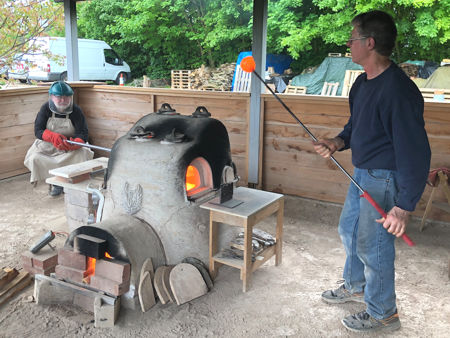
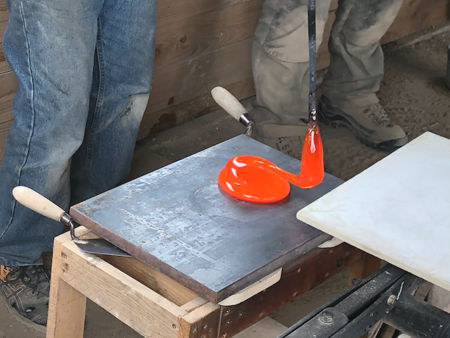
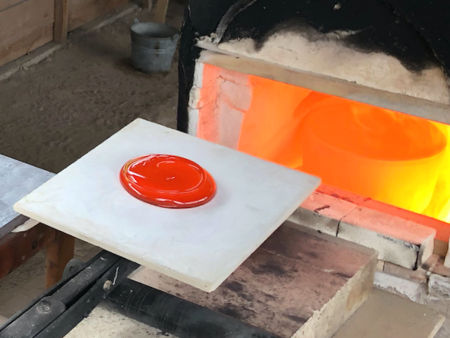
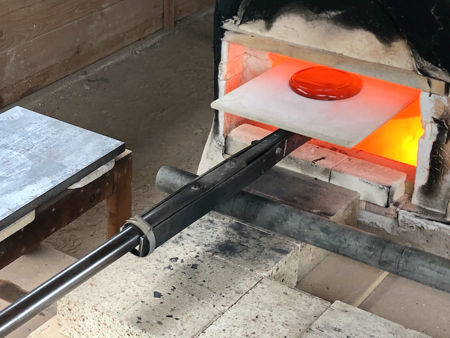
|
|
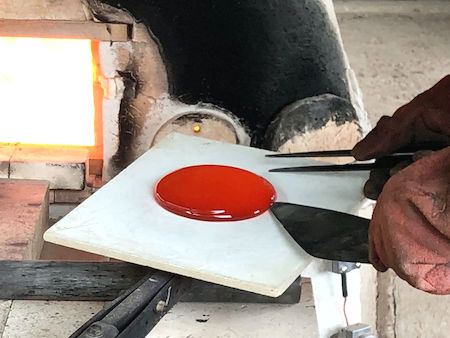
|
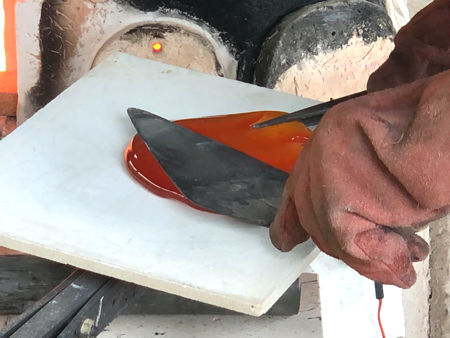
|
|
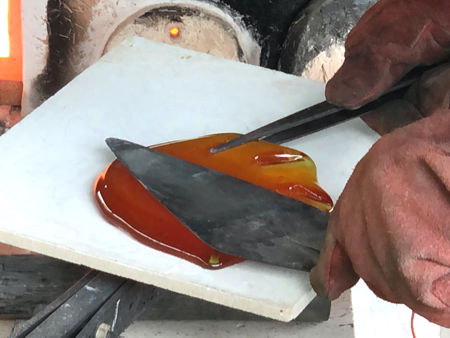
|
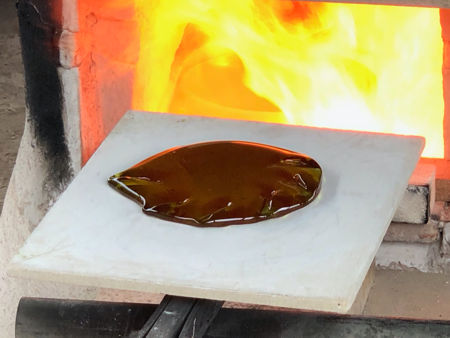
|
|
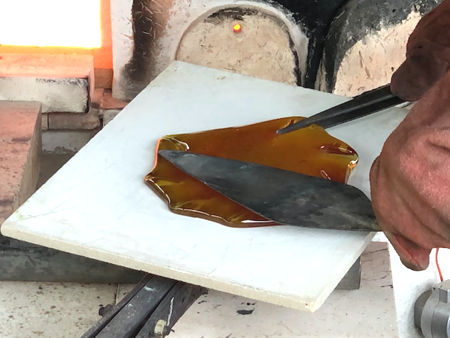
|
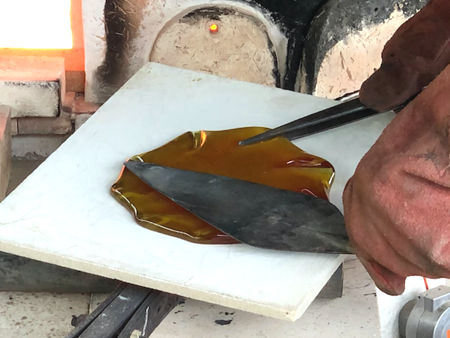
|
|
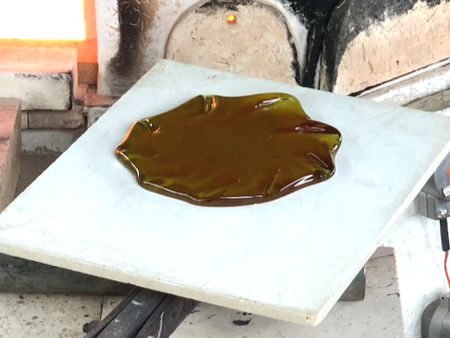
|
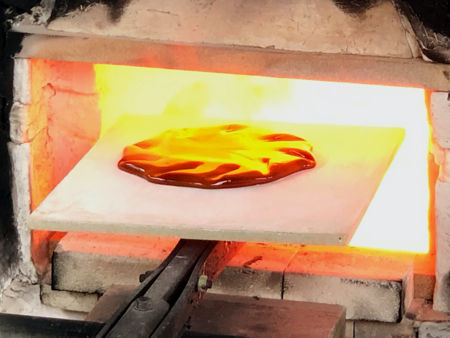
|
|
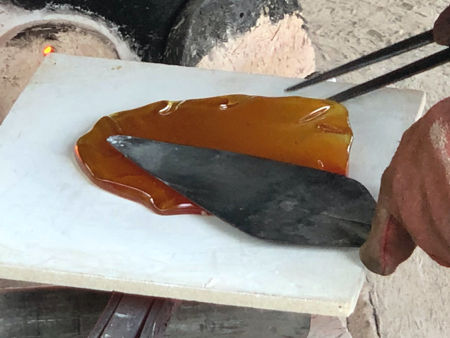
|
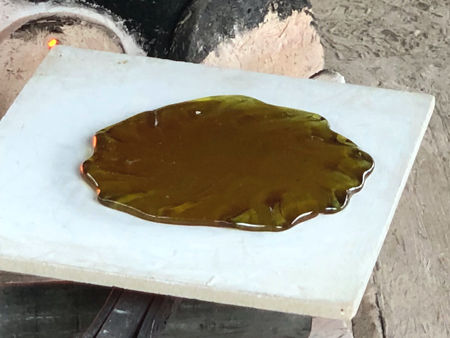
|
|
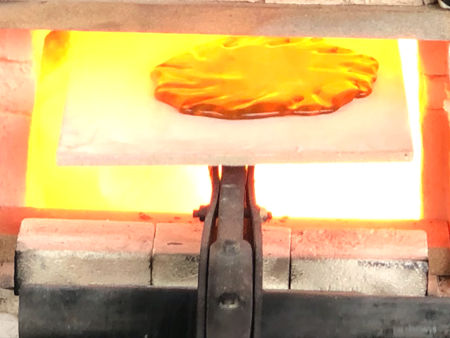
|
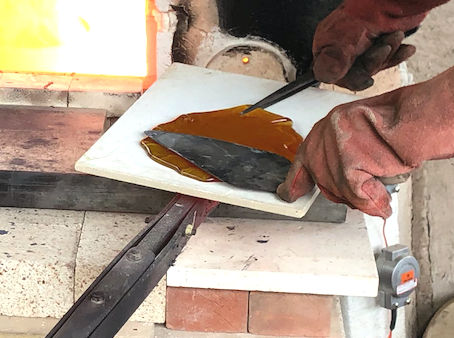
|
|
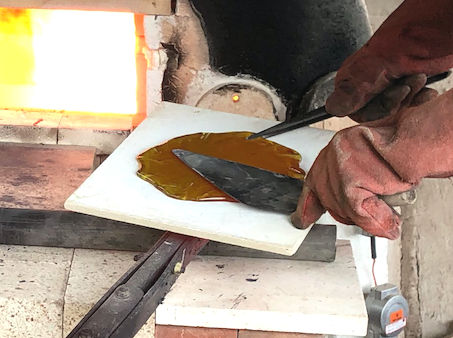
|
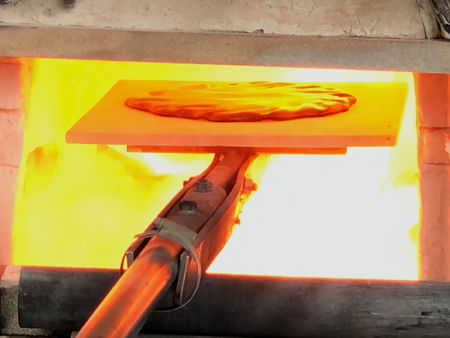
|
|
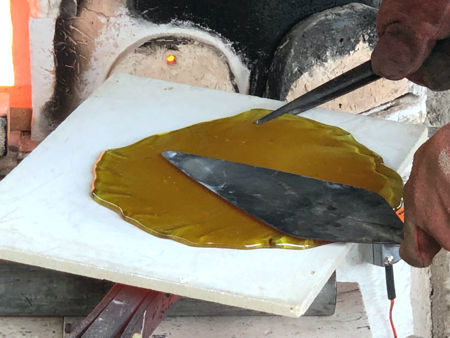
|
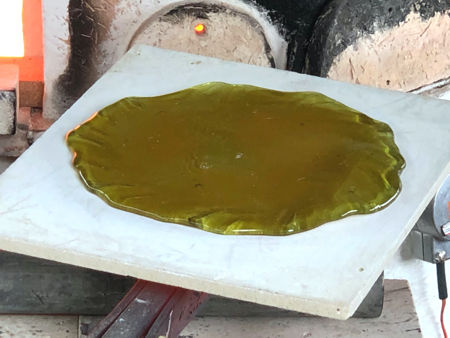
|
|
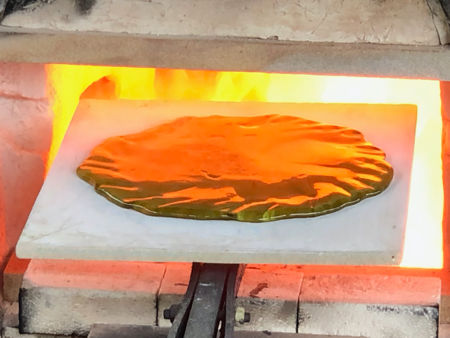
|
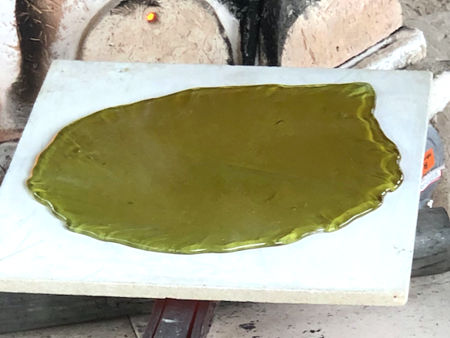
|
|
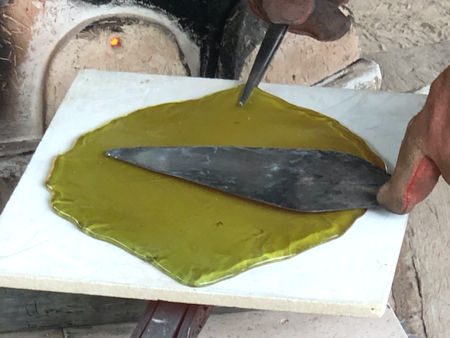
|
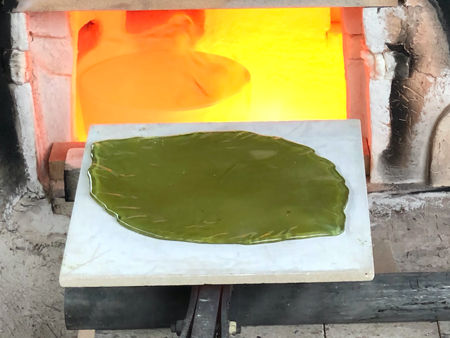
|
|
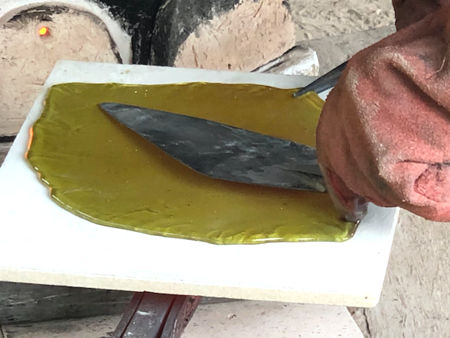
|
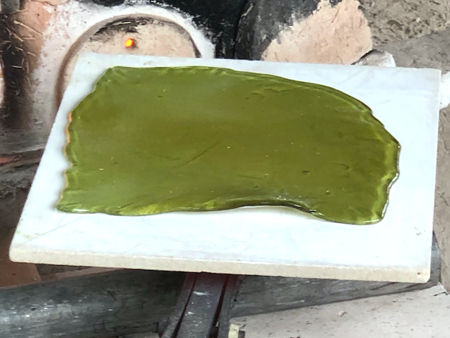
|
|
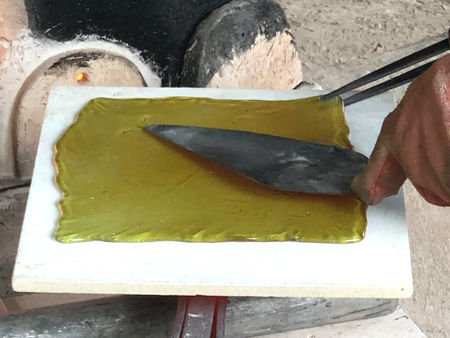
|
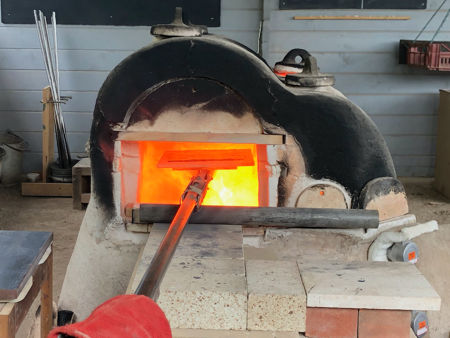
|
|
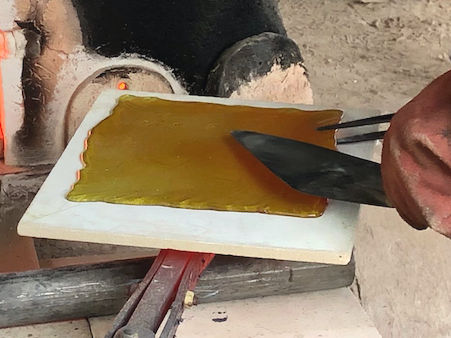
|
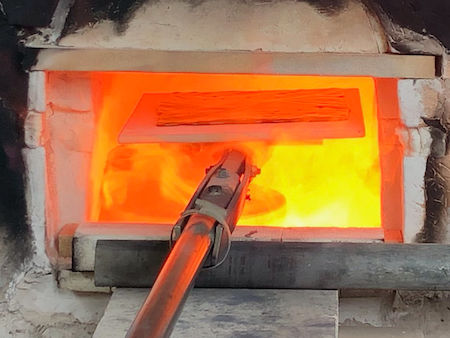
|
|
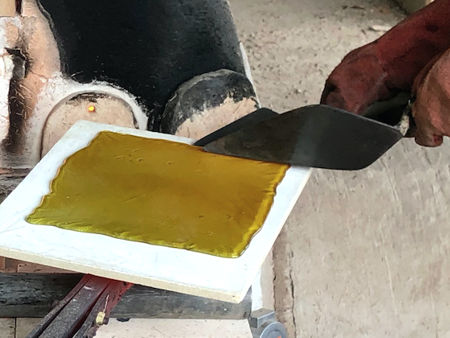
|
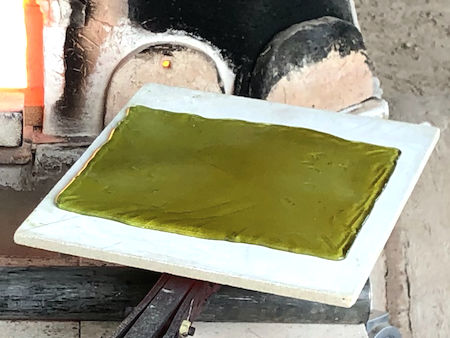
|
|
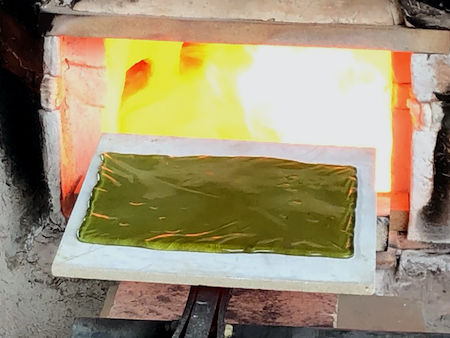
|
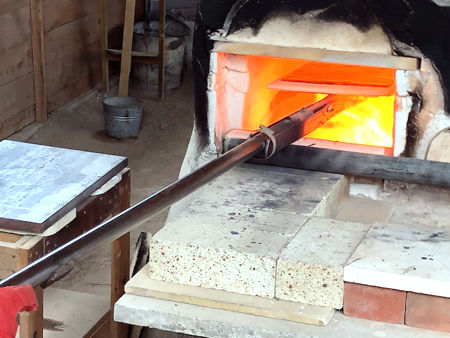
|
|
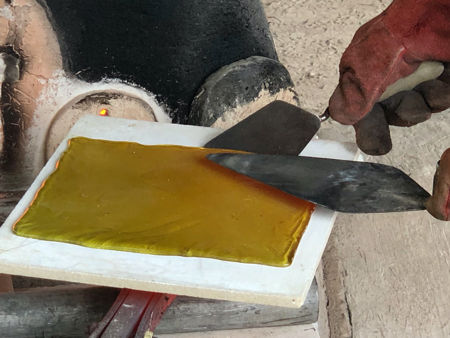
|
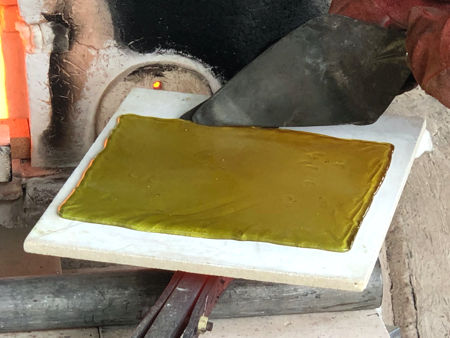
|
|
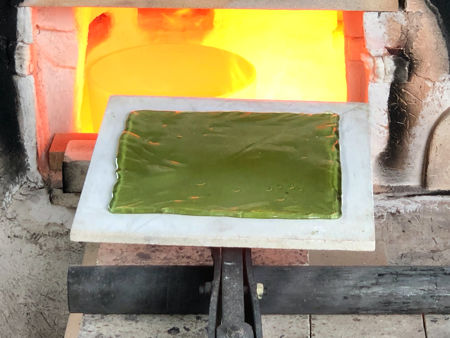
|
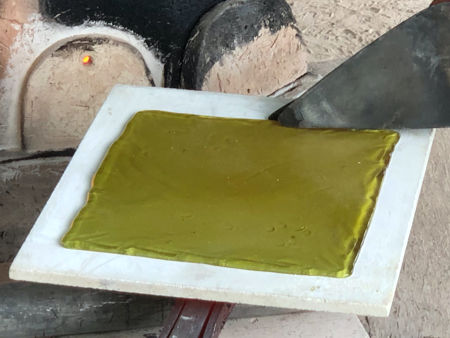
|
|
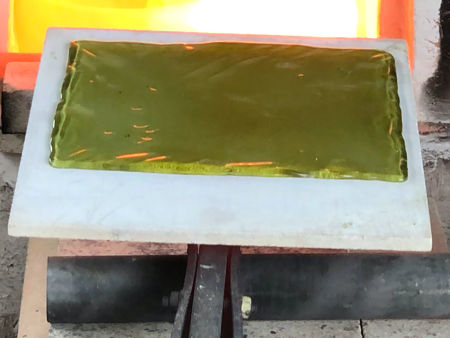
|
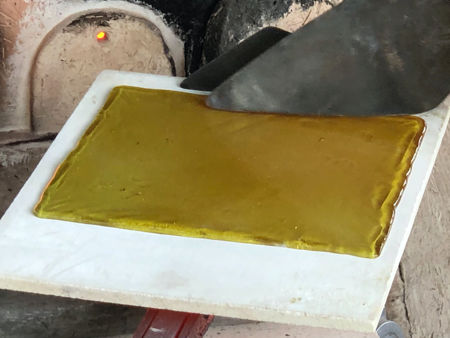
|
|
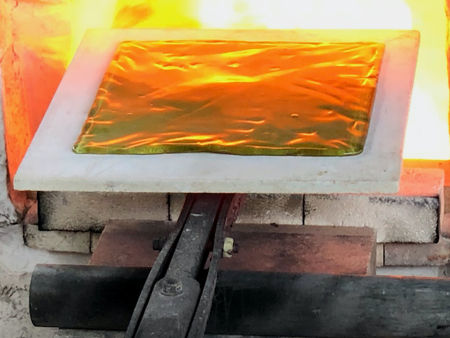
|
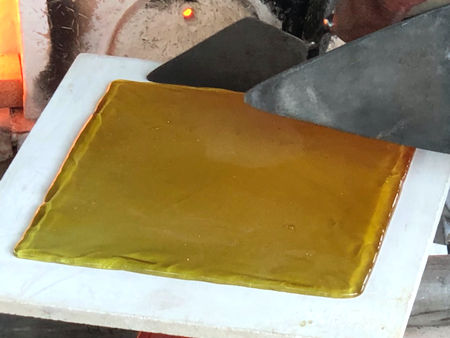
|
|
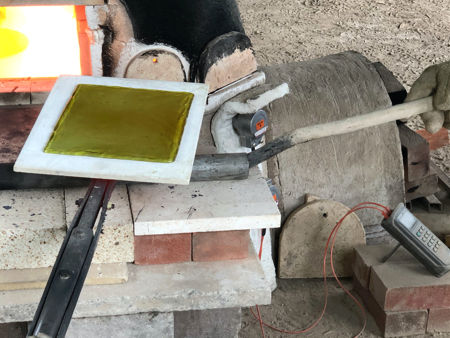
|
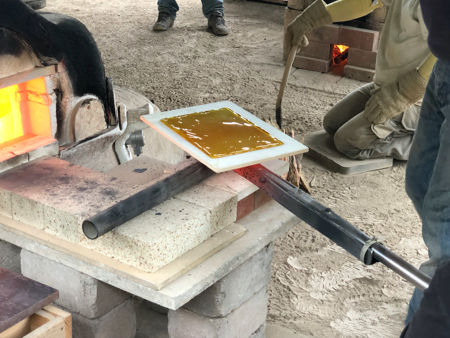
|
|
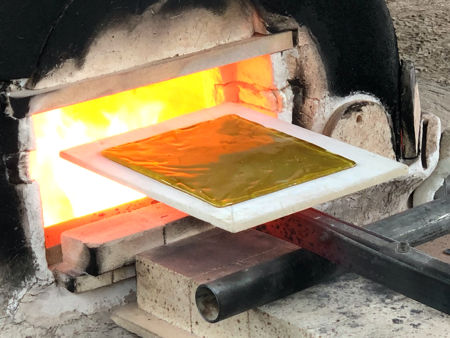
|
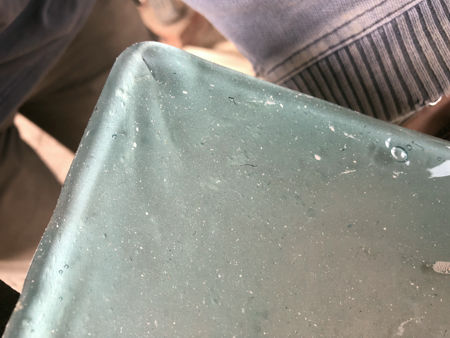
|
|
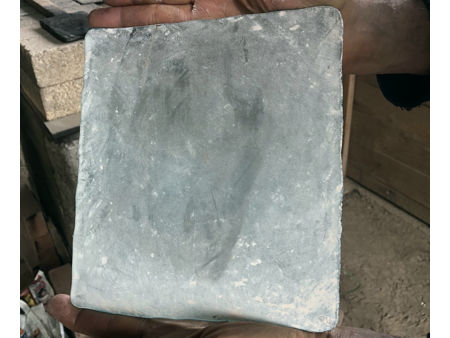
|

|
|
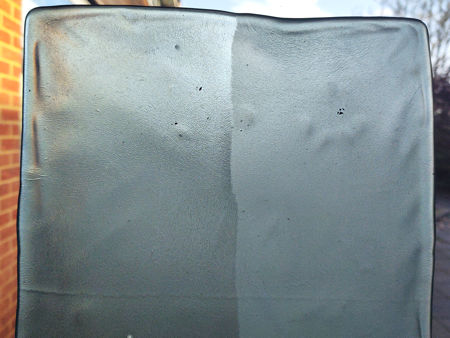
|
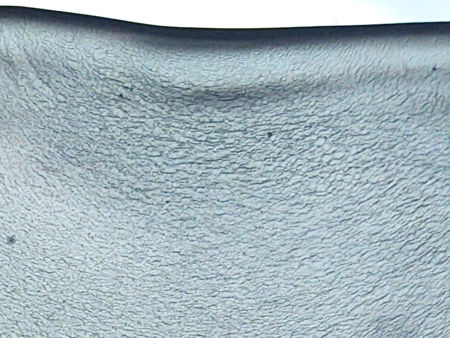
|
|
Domed Window Panes
These panes are made by stretching a disc of glass using the same method of stretching as for flat non-blown glass, then slumping it over a hollow form to achieve a flanged bowl-shape. In this case, the form is made from daub (a 50-50 by volume mix of clay and chopped hay: see this page). It is pre-fired up to about 1000°C, then worked on to smooth the surface (a rough file and/or sandpaper are useful tools for this job). A separator is not needed as the underside of the glass disc has already been already coated with powdered clay during stretching to size and shape. Domed panes have a similar method of manufacture as, for instance, ribbed bowls. Both are begun by stretching a large gather of glass to a disc shape. The disc for the ribbed bowl has its ribs pinched before it is slumped over a form of a size that allows the rim of the bowl to just touch the surface the form is resting on, whilst the domed pane is slumped over a smaller form that allows a flange to form when meeting the surface it is resting on. The stretch marks on the underside of original domed panes are similar to those on original flat matt/glossy panes, as well as on original ribbed bowls and other non-blown bowls (when the surface is visible in its unground state) suggesting that they were all made using similar, related techniques. Original domed window panes can be as large as 52cm in diameter by 16cm in height (Fontaine and Foy - see below). suggesting dedicated furnaces and specialist production, as with flat matt/glossy panes. There are no captions for the photos of the domed window panes as they are self-explanatory. However, the first two photos show the first gather cooling in the open air to make it stiff-enough to accept a large second gather, and the last two photos show the stretch marks on the underside of a domed window pane. Fontaine, S.D. and Foy, D. (2005) 'Une Cargaison Fragile: les vitres de l'épave Ouest Embiez 1' in 'De Transparentes Spéculations-No.4: Musée/Site d'Archéologie Bavay, France. |
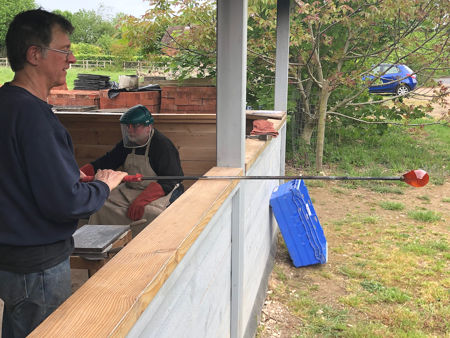

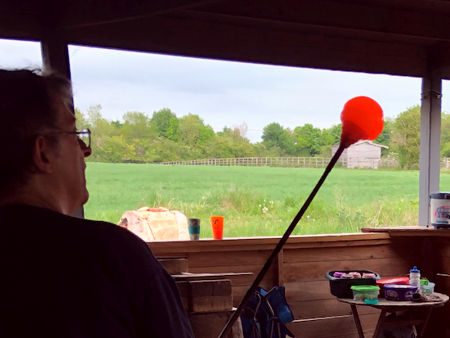
|
|
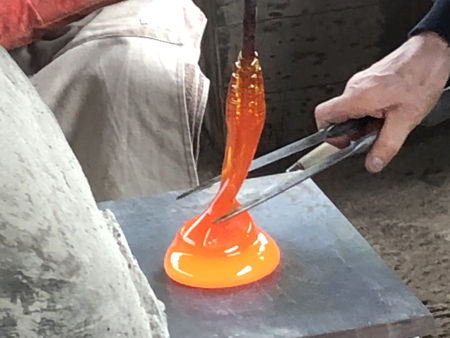
|
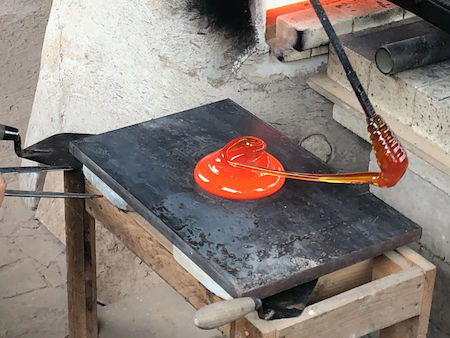
|
|
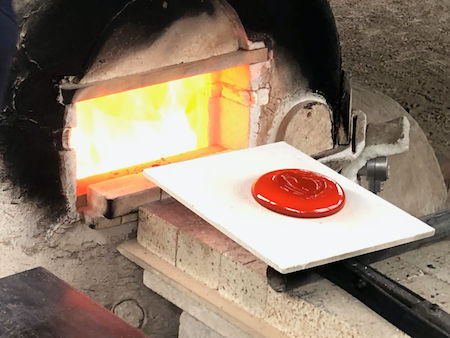
|
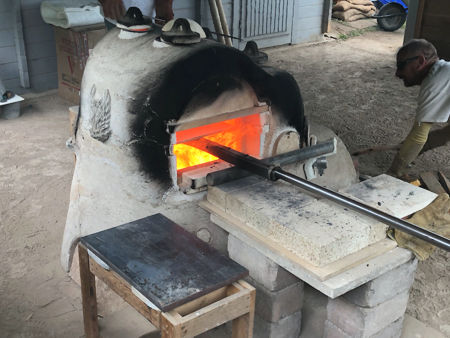
|
|
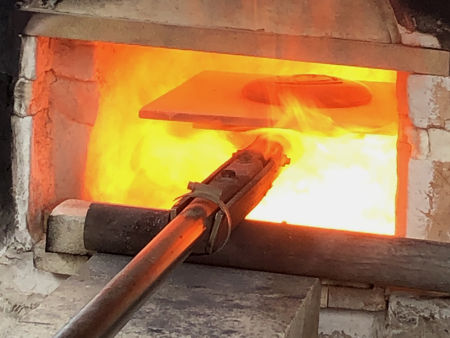
|
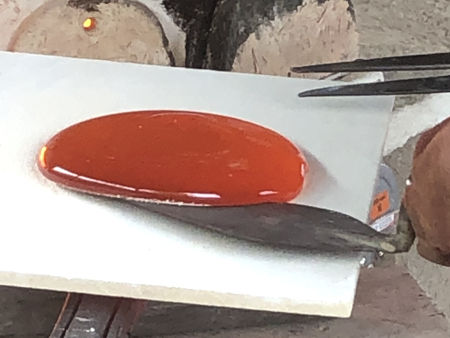
|
|

|
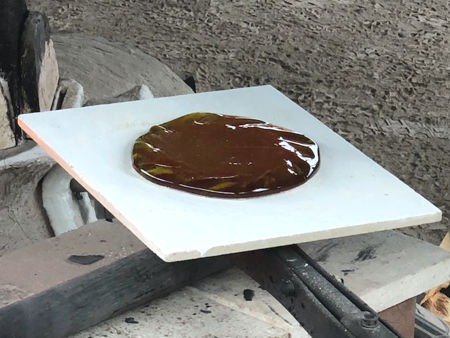
|
|
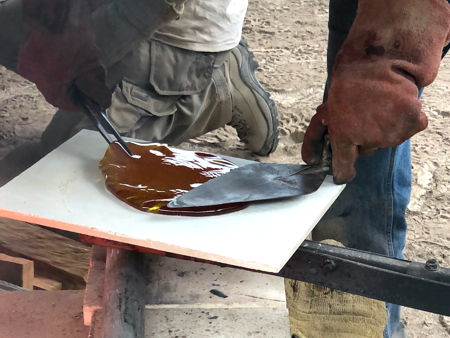
|
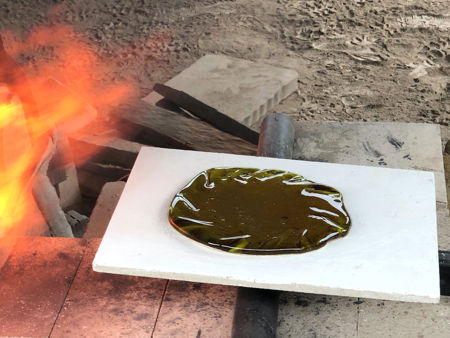
|
|
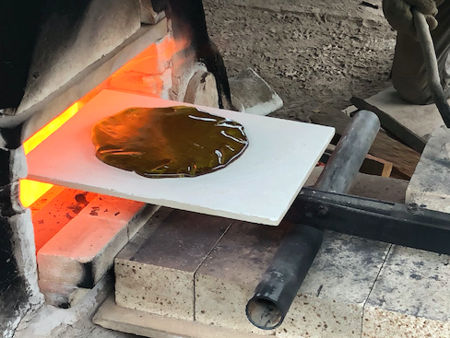
|
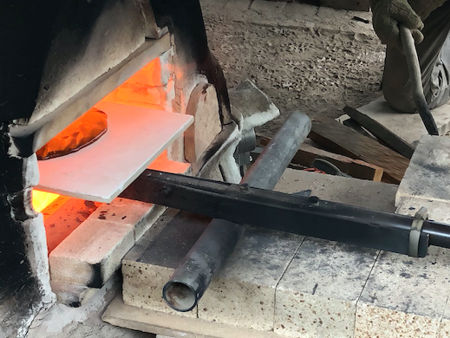
|
|
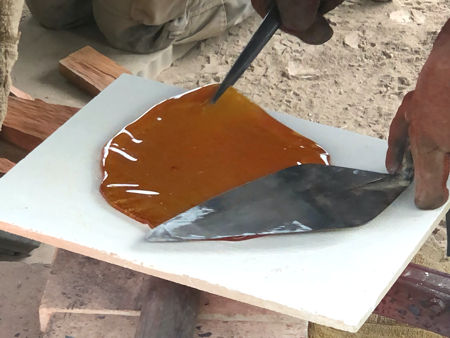
|

|
|
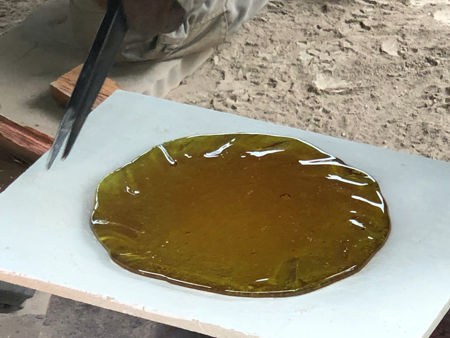
|
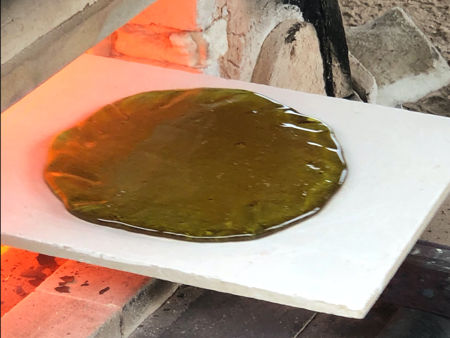
|
|
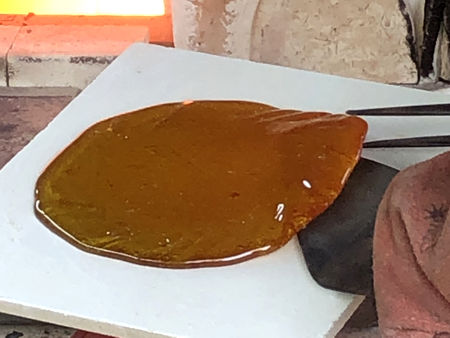
|
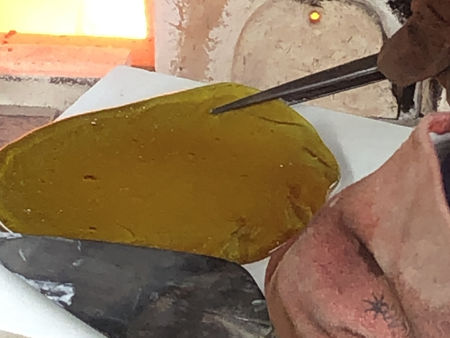
|
|
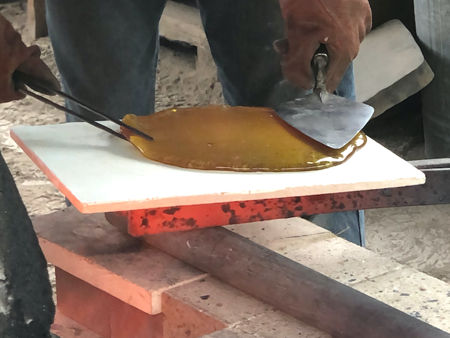
|
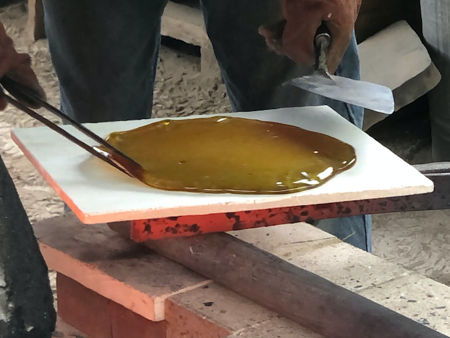
|
|
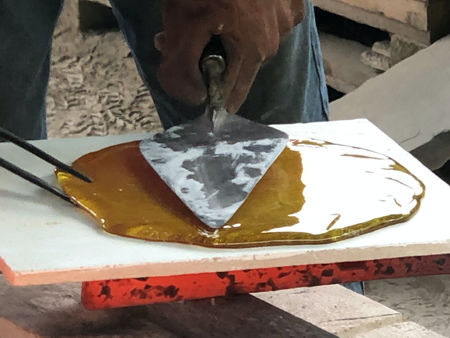
|
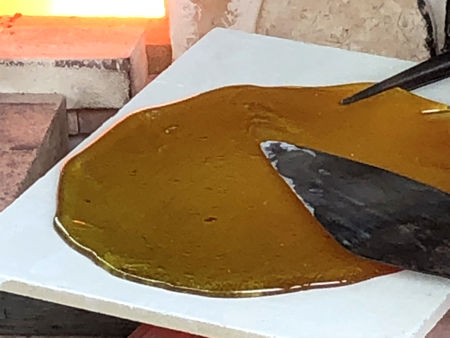
|
|
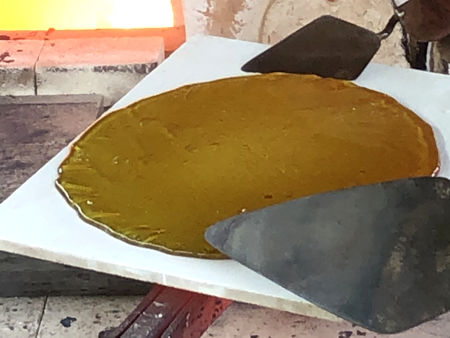
|
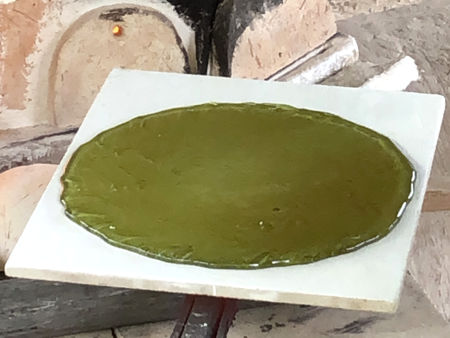
|
|
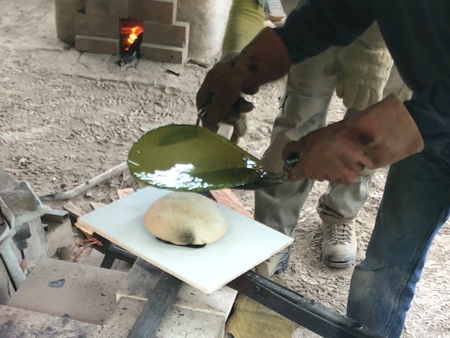
|
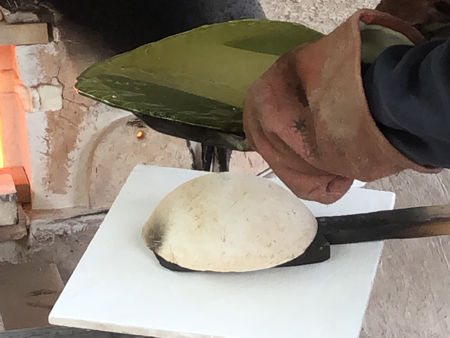
|
|
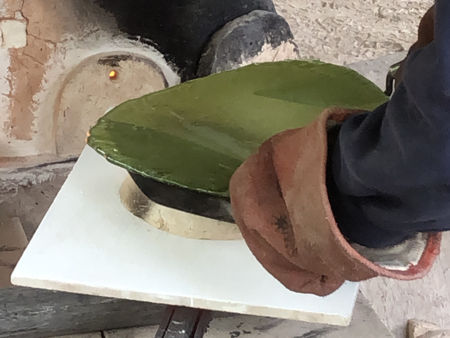
|
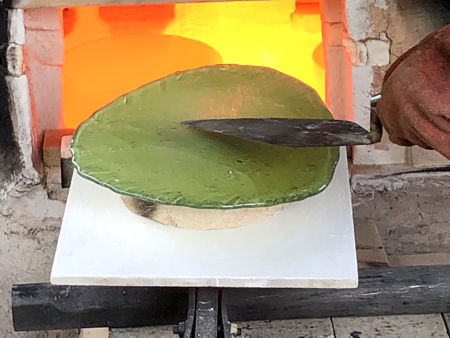
|
|
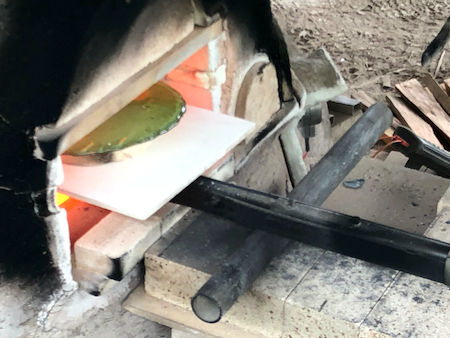
|
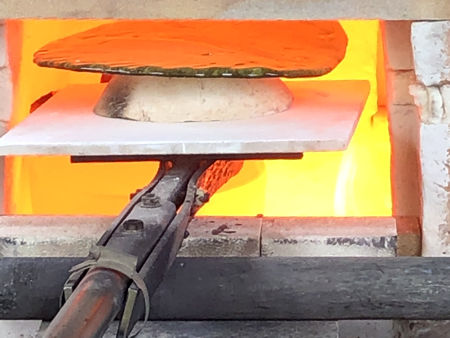
|
|
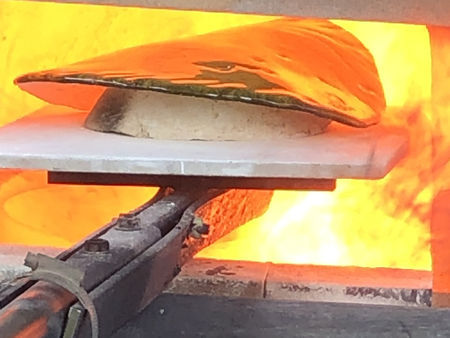
|
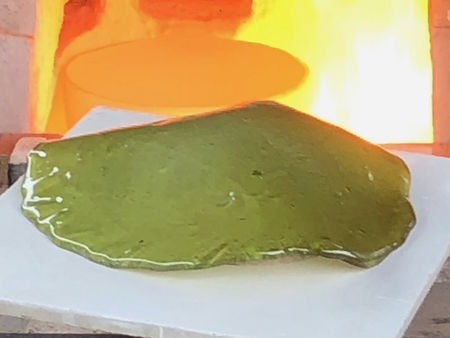
|
|

|
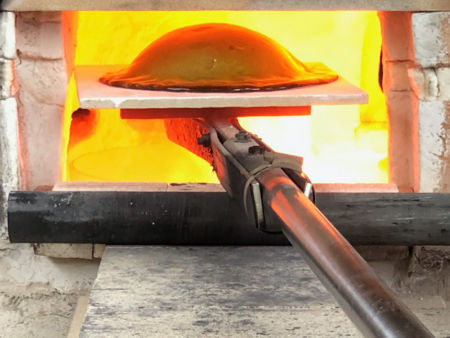
|
|
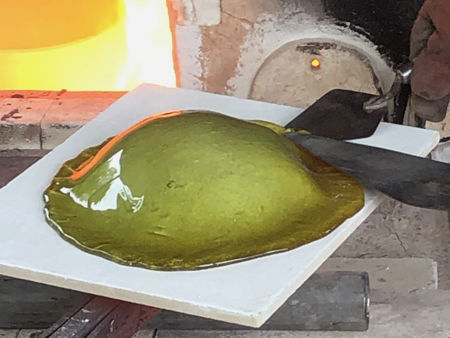
|
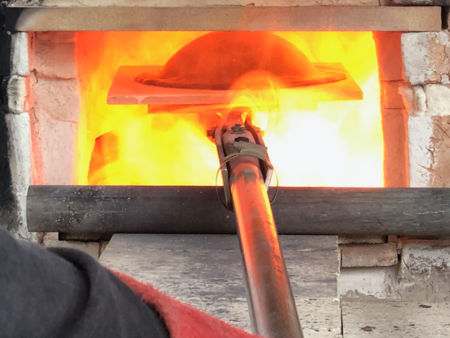
|
|
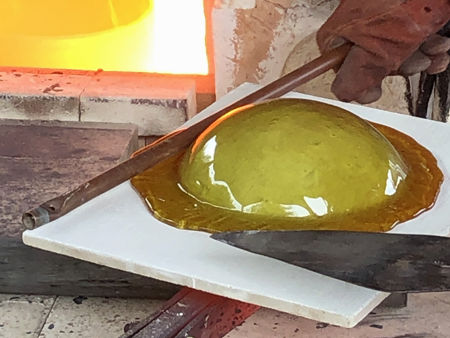
|
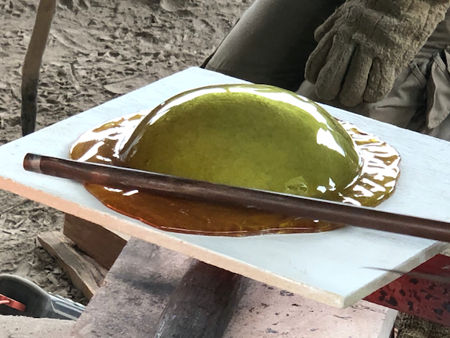
|
|
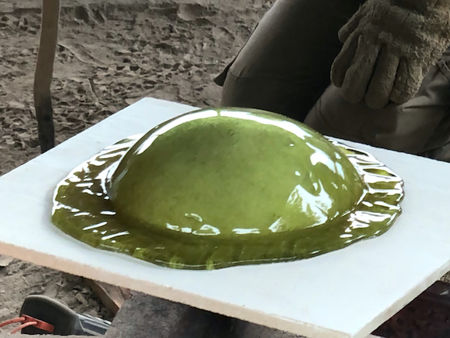
|
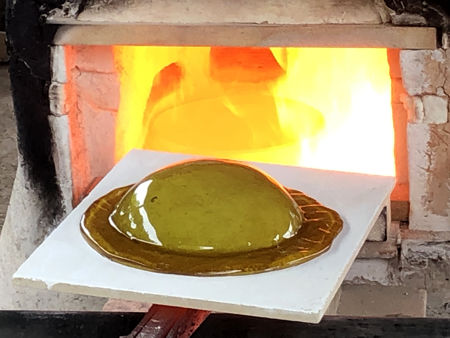
|
|
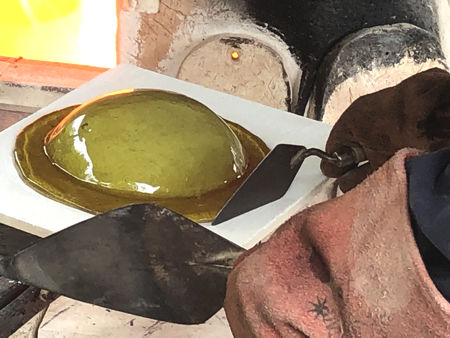
|
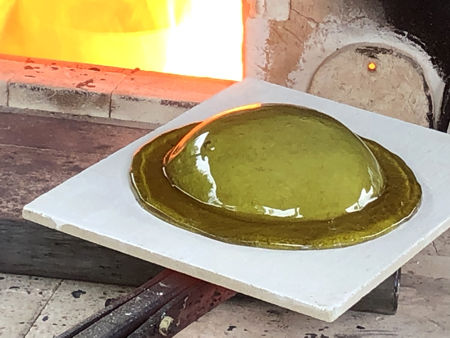
|
|
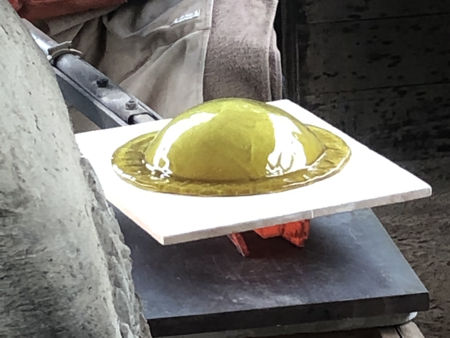
|
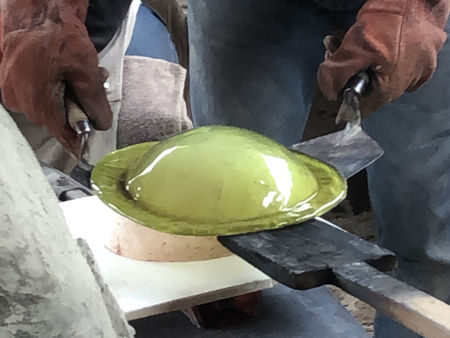
|
|
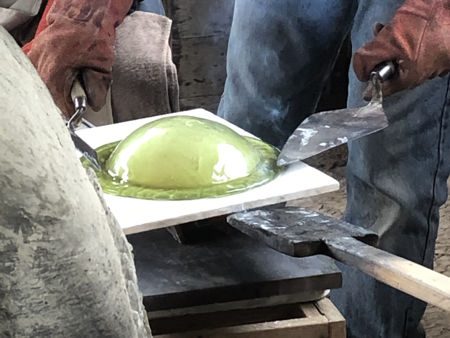
|
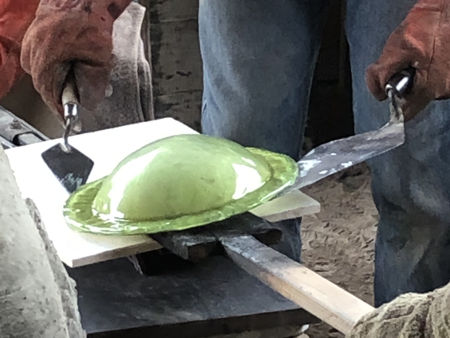
|
|
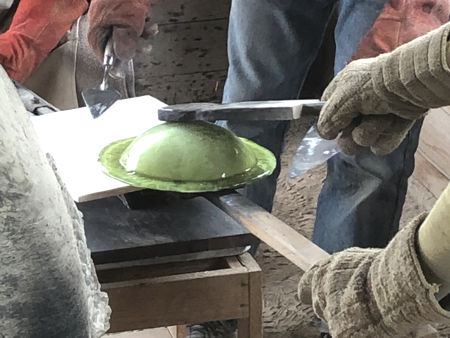
|
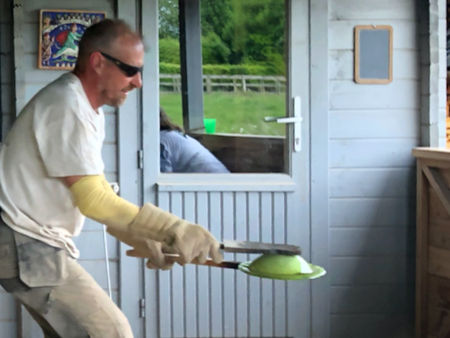
|
|
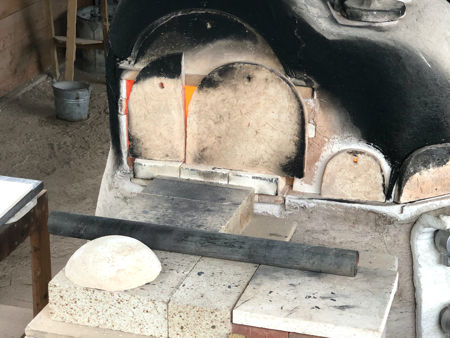
|
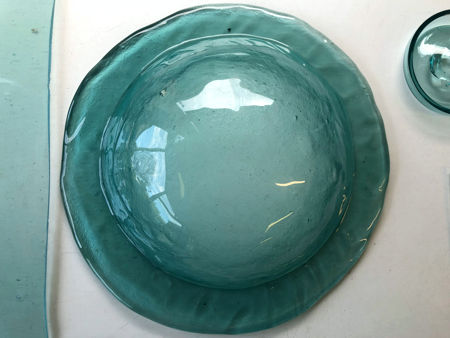
|
|
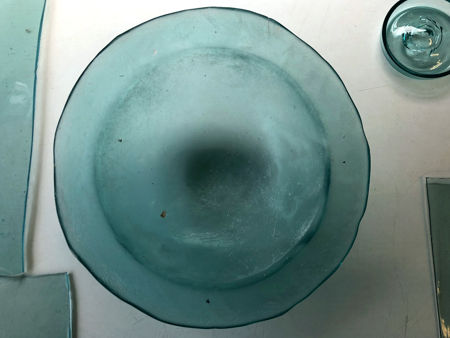
|
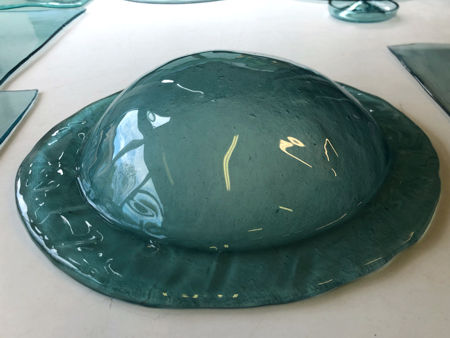
|
|
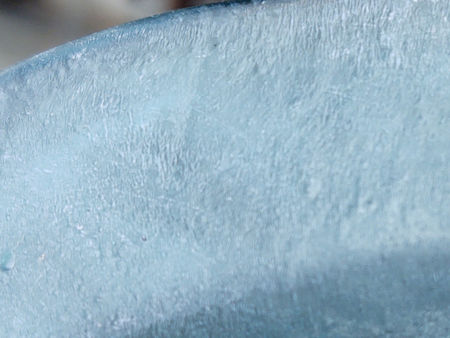
|
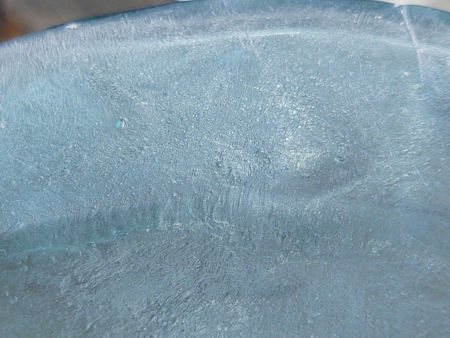
|
Home Gallery Contact Events & Projects Projects: 2019 Onwards Film & TV Archive & Links